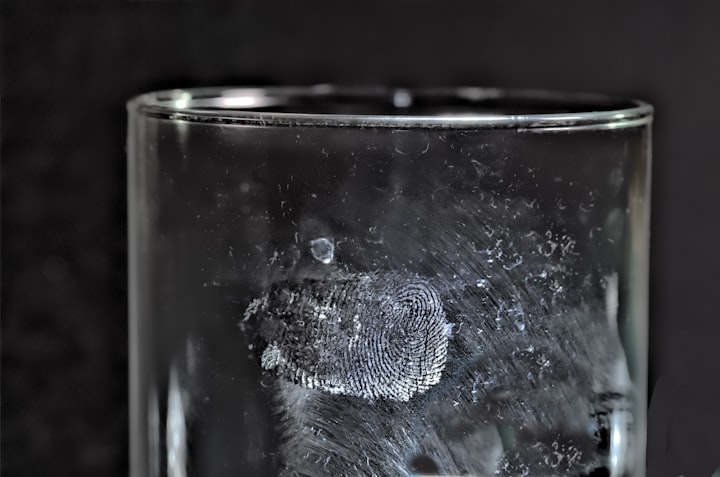
Forensic Files Unleashed: Incredible Breakthroughs and New Discoveries
Forensic science has come a long way since its inception, with advancements in technology and methodologies revolutionizing the field. The pursuit of justice has been enhanced by incredible breakthroughs and new discoveries, leading to the resolution of cold cases and the identification of perpetrators. In this article, we delve into the world of forensic files, exploring the latest innovations that have unleashed a new era in forensic investigations.
1. Introduction
Forensic science, the application of scientific techniques to investigate crimes and analyze evidence, has witnessed significant progress in recent years. This progress has enabled forensic experts to solve complex cases that were once deemed unsolvable. From DNA analysis to digital forensics, a multitude of disciplines within forensic science have made remarkable strides, offering fresh insights into criminal investigations.
2. The Evolution of Forensic Science
To truly appreciate the impact of recent breakthroughs, it is essential to understand the evolution of forensic science. Dating back to ancient civilizations, early practices such as fingerprinting and autopsy laid the foundation for modern forensic techniques. Over time, advancements in chemistry, biology, and technology propelled forensic science into the forefront of criminal justice.
3. Advancements in DNA Analysis
One of the most significant breakthroughs in forensic science has been the development of DNA analysis. This powerful tool allows investigators to identify suspects with unprecedented accuracy. The introduction of techniques like PCR and STR analysis has revolutionized the field, leading to the successful resolution of numerous cases. Additionally, advancements in familial DNA searching have further expanded the capabilities of DNA analysis, linking suspects to previously unsolved crimes.
4. Cutting-Edge Technologies in Crime Scene Investigation
Crime scene investigation plays a pivotal role in forensic science. The integration of cutting-edge technologies, such as 3D laser scanning and aerial drones, has transformed how crime scenes are documented and analyzed. These tools enable investigators to create detailed virtual reconstructions and capture crucial evidence that might have been missed in the past. Moreover, augmented reality and virtual reality are being utilized to recreate crime scenes, aiding in courtroom presentations and jury comprehension.
5. Digital Forensics: Uncovering the Secrets of Cybercrime
As technology continues to advance, so does the world of cybercrime. Digital forensics has emerged as a crucial field within forensic science, focusing on the extraction and analysis of digital evidence. From retrieving deleted files to uncovering encrypted communications, digital forensics experts employ specialized tools and techniques to expose the hidden secrets of cybercriminals. This branch of forensic science has become indispensable in combating cyber threats and protecting individuals and organizations from digital attacks.
6. Forensic Anthropology: Piecing Together the Past
Forensic anthropology plays a vital role in the identification of human remains and the reconstruction of past events. By examining skeletal remains, forensic anthropologists can determine a person's age, sex, and even ancestry. Furthermore, they can provide insights into the cause of death and assist in the identification of individuals in mass disasters or historical cases. The application of cutting-edge techniques, such as stable isotope analysis and facial reconstruction, has significantly enhanced the capabilities of forensic anthropologists.
7. Forensic Odontology: Biting into Criminal Investigations
The examination of dental evidence has proven invaluable in criminal investigations. Forensic odontology involves the analysis of teeth, bite marks, and dental records to establish identities and aid in the resolution of cases. Bite mark analysis, in particular, has been utilized to link suspects to crimes, with advancements in photographic and computerized techniques improving the accuracy and reliability of this method. Forensic odontologists play a crucial role in uncovering hidden evidence and providing expert testimony in court.
8. Serology and Toxicology: Investigating Body Fluids and Poisons
Serology and toxicology are branches of forensic science that focus on the analysis of body fluids and poisons. Serologists examine blood, saliva, semen, and other bodily fluids to determine the presence of DNA, antibodies, or toxins. Toxicologists, on the other hand, analyze substances within the body to identify drugs, poisons, or alcohol levels. These disciplines aid in establishing connections between suspects and victims, identifying causes of death, and detecting the presence of substances that may have impaired individuals involved in criminal activities.
9. Ballistics and Firearms Examination: Tracing the Path of Bullets
Ballistics and firearms examination involve the analysis of firearms, ammunition, and ballistic evidence. Experts in this field use sophisticated techniques to match bullets, casings, and firearms to specific crimes. Through microscopic examinations, toolmark analysis, and gunshot residue testing, ballistics experts can establish links between firearms and suspects, as well as reconstruct shooting incidents. These analyses have played a crucial role in solving firearm-related crimes and providing crucial evidence in court.
10. Forensic Psychology: Understanding the Criminal Mind
Forensic psychology focuses on understanding the behaviors and motivations of criminals. By applying psychological principles and theories, forensic psychologists contribute to criminal profiling, witness assessment, and jury selection. The analysis of offender characteristics and behavioral patterns assists investigators in narrowing down suspects and providing insights into their likely actions. Forensic psychology has proven to be a valuable tool in solving complex cases and bringing perpetrators to justice.
11. Forensic Entomology: Insects as Silent Witnesses
Forensic entomology utilizes knowledge of insects and their life cycles to aid in criminal investigations. Insects, attracted to decomposing bodies, provide valuable information regarding the postmortem interval or the location of death. By studying the stages of insect development and the species present, forensic entomologists can estimate the time of death and provide crucial evidence regarding the circumstances surrounding a crime. This field has been particularly useful in cases involving hidden or clandestine burials.
12. Forensic Pathology: Examining Causes of Death
Forensic pathology involves the examination of bodies to determine the cause and manner of death. Forensic pathologists perform autopsies and analyze medical records to establish the circumstances surrounding a death. Their expertise is crucial in identifying signs of trauma, investigating suspicious deaths, and providing evidence in homicide cases. Technological advancements, such as digital imaging and minimally invasive autopsies, have improved the efficiency and accuracy of forensic pathology.
13. Forensic Engineering: Investigating Structural Failures
Forensic engineering applies engineering principles to investigate structural failures, accidents, and disasters. By analyzing architectural plans, conducting material tests, and examining structural elements, forensic engineers can determine the causes of collapses, fires, and other accidents. Their findings can be used to improve safety regulations, prevent future incidents, and provide evidence in legal proceedings. The combination of engineering expertise and forensic analysis is crucial in determining liability and ensuring accountability.
14. Forensic Linguistics: Decoding the Language of Crime
Forensic linguistics focuses on analyzing language to assist in criminal investigations. Linguistic experts study written and spoken texts to identify authorship, detect deception, and uncover hidden meanings. They analyze ransom notes, threatening letters, and recorded conversations to establish connections between suspects and crimes. Additionally, forensic linguistics plays a role in analyzing courtroom discourse, providing insights into juror comprehension and the effectiveness of legal arguments.
15. Conclusion
The world of forensic science has witnessed incredible breakthroughs and new discoveries, revolutionizing the way crimes are investigated and solved. From advancements in DNA analysis to the application of cutting-edge technologies, forensic experts continue to push the boundaries of possibility. These advancements have not only led to the resolution of cold cases but have also prevented future crimes, ensured justice for victims, and increased public safety.
FAQs (Frequently Asked Questions):
How has DNA analysis transformed forensic investigations?
DNA analysis has significantly improved the accuracy and reliability of identifying suspects and linking them to crimes. It has revolutionized forensic investigations and led to the resolution of numerous cold cases.
What role does digital forensics play in combating cybercrime?
Digital forensics allows investigators to extract and analyze digital evidence, uncovering the secrets of cybercriminals. It plays a crucial role in identifying digital threats and protecting individuals and organizations from cyber attacks.
How do forensic anthropologists contribute to criminal investigations?
Forensic anthropologists help identify human remains, determine causes of death, and assist in the reconstruction of past events. Their expertise is crucial in cases involving unidentified bodies or mass disasters.
What is the significance of bite mark analysis in forensic investigations?
Bite mark analysis can link suspects to crimes by comparing dental impressions. Advances in photographic and computerized techniques have enhanced the accuracy and reliability of this method.
How do forensic psychologists aid in criminal investigations?
Forensic psychologists provide insights into the behaviors and motivations of criminals, contributing to criminal profiling and jury selection. Their expertise helps narrow down suspects and understand the criminal mind.
About the Creator
Ted Bundy
Welcome to our true crime blog, where we unravel mysteries, explore criminal minds, and share gripping narratives. Join us for captivating investigations and engage in thoughtful discussions on the pursuit of justice.





Comments
There are no comments for this story
Be the first to respond and start the conversation.